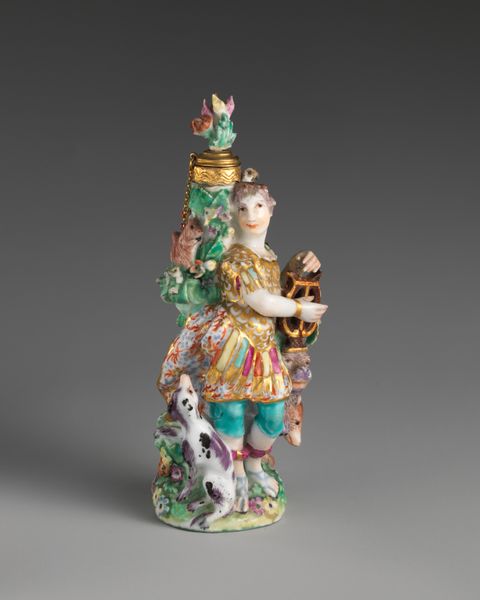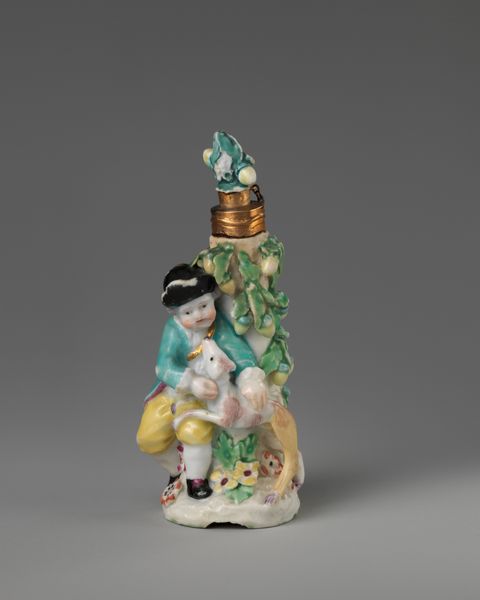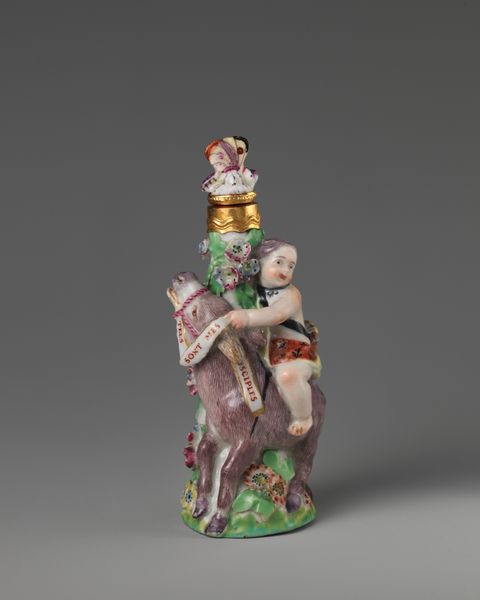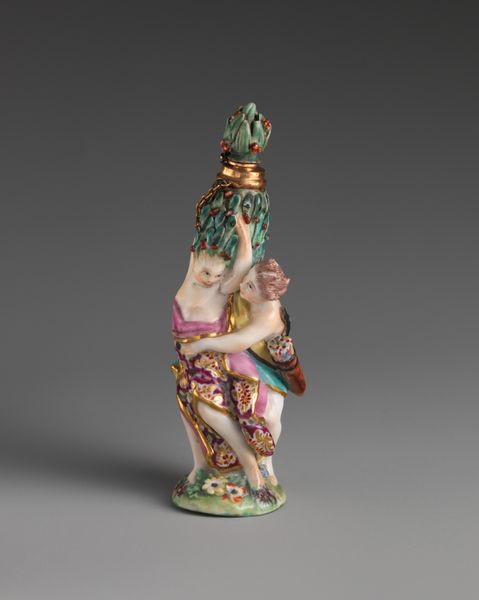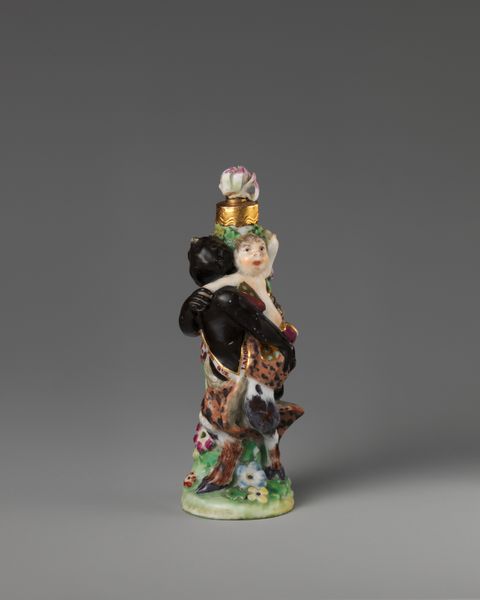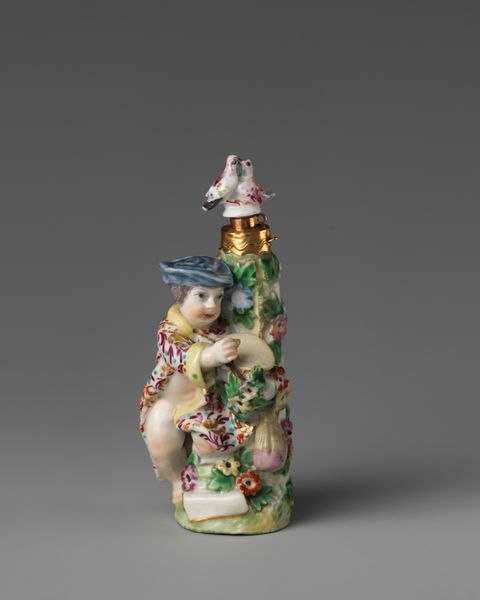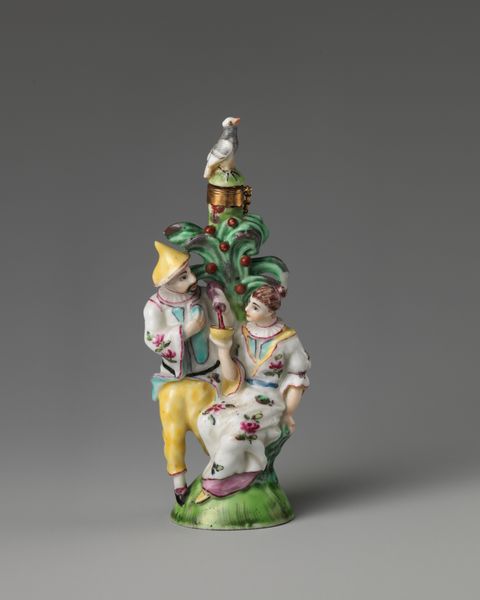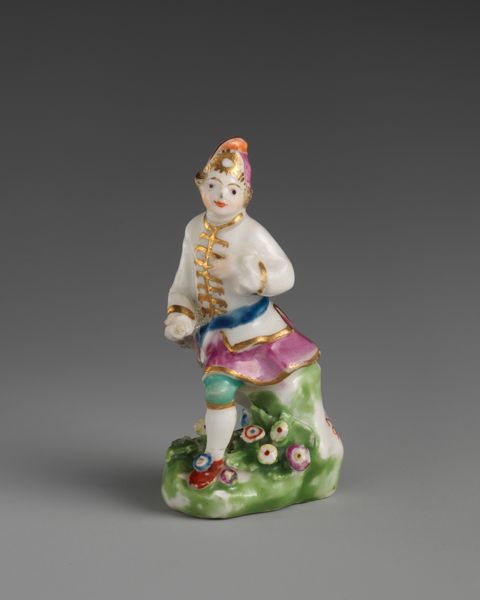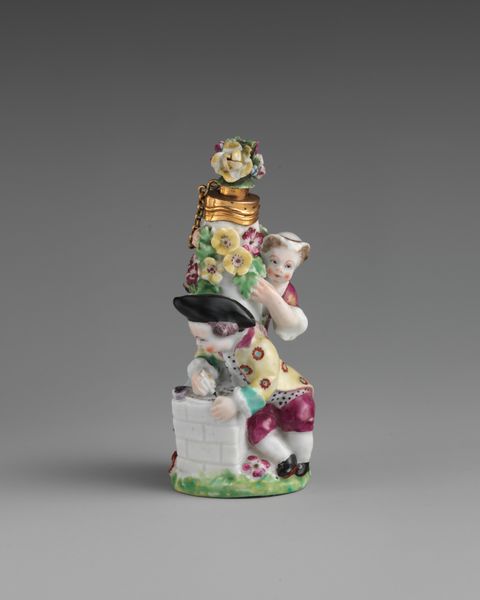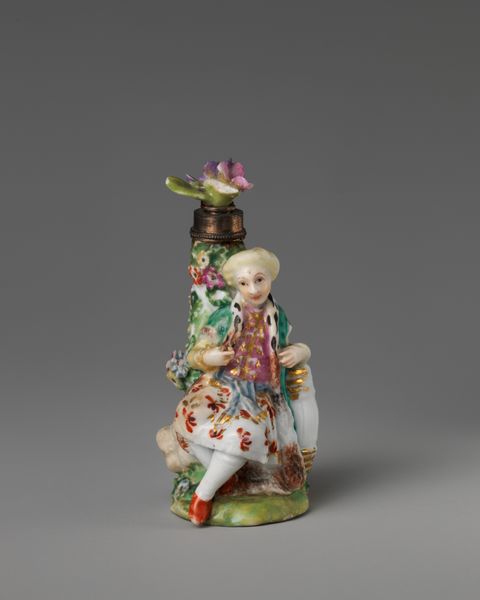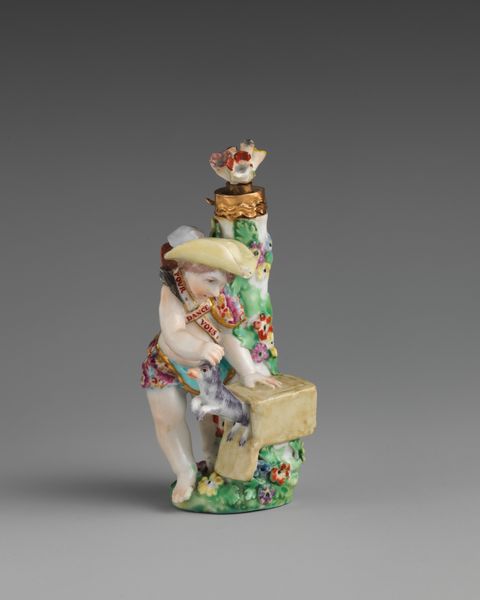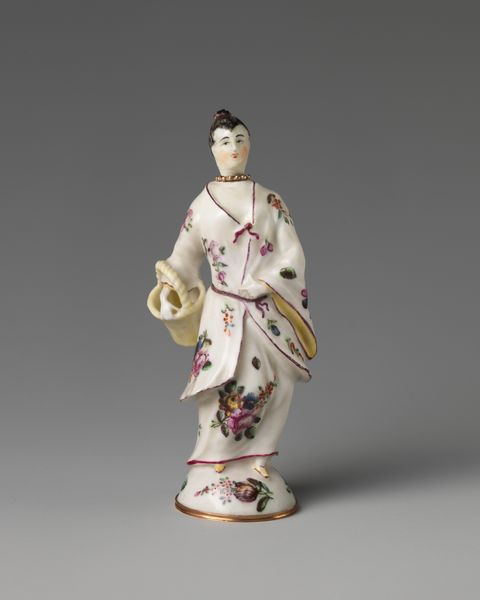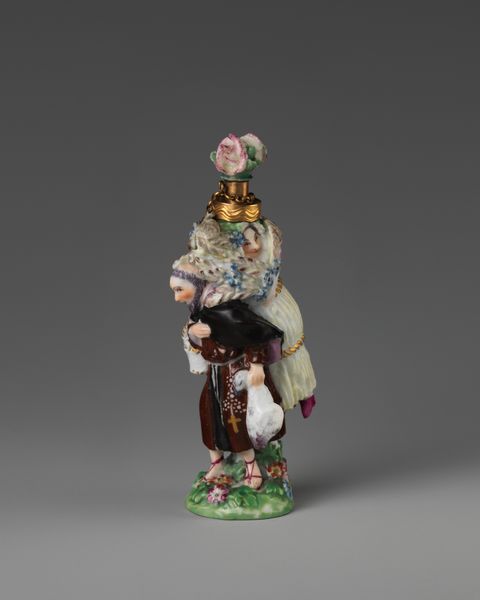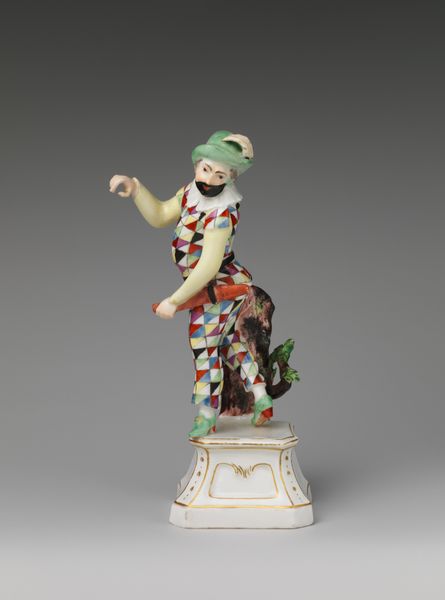
ceramic, porcelain, sculpture
#
ceramic
#
boy
#
porcelain
#
figuration
#
sculpture
#
genre-painting
#
decorative-art
#
miniature
#
rococo
Dimensions: 3 1/2 × 1 1/8 in. (8.9 × 2.9 cm)
Copyright: Public Domain
Curator: Well, isn't this utterly charming? I feel like I've been shrunk and dropped into a dollhouse. Editor: You’ve perfectly described that miniature world feeling. We're looking at "Boy Gardener," a porcelain figurine made by the Chelsea Porcelain Manufactory sometime between 1755 and 1765. Curator: Porcelain, of course. So delicate, yet this little fellow is doing some heavy lifting! He looks slightly put upon actually, hauling what seems to be a tower on his head. What is he even carrying? Editor: That's a pastille burner. It would have held perfumed incense. Part of the function was certainly decorative but these sculptures like many rococo pieces had both practical use and conveyed social status, luxury and good taste. Curator: Ah, to mask the odors of the time, naturally! It makes me think about the performative aspects of being “of the people.” Here’s this figure of a gardener doing the labor, while carrying an item of utmost luxury—is it satire? A cute paradox? I find myself wanting to giggle at it, the poor boy. Editor: That's an interesting observation. There is certainly some irony. While these figurines depicted genre scenes—ordinary life— they catered to aristocratic tastes. Think about the gardens themselves—they represented control of nature. Curator: I can't help but wonder, what would it feel like to hold that on your head all day? That is such strange burden. Editor: The artist plays on a type of theater there. To show an innocent youth in service is to give a comforting feeling of nostalgia. The detail on his clothes! This suggests an attempt at realness and humor within its constraints. Curator: Yes! Real and artificial, both at once. I would be fascinated to meet this artist; this piece leaves me smiling. Editor: For me, this artwork prompts questions about social hierarchy and who controlled the imagery of the era—its lasting commentary is on our own fascination with representations.
Comments
No comments
Be the first to comment and join the conversation on the ultimate creative platform.
